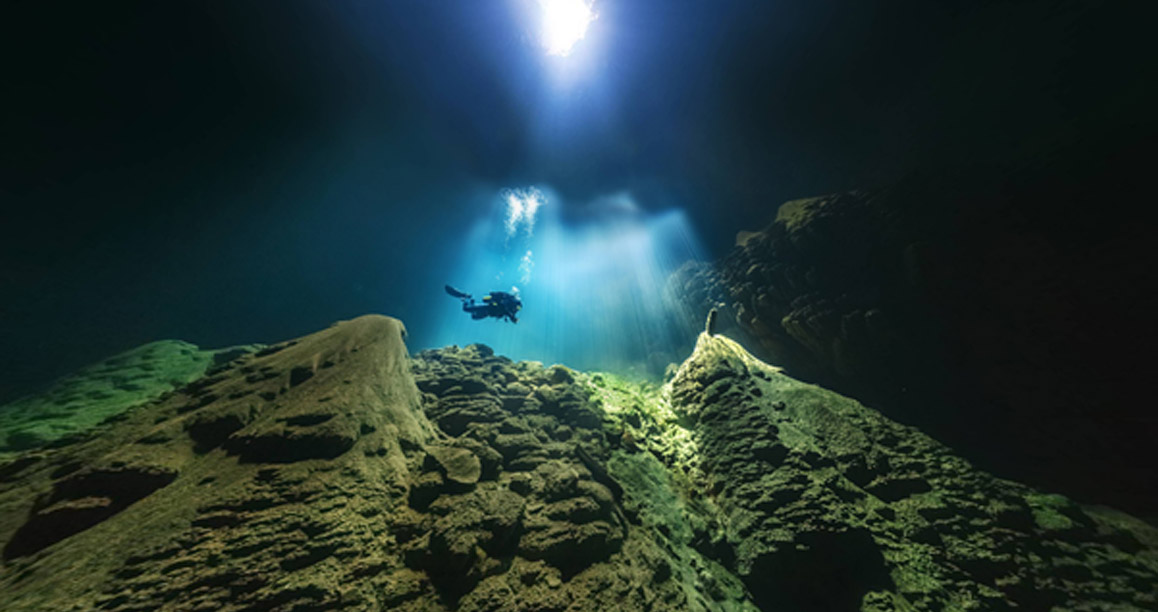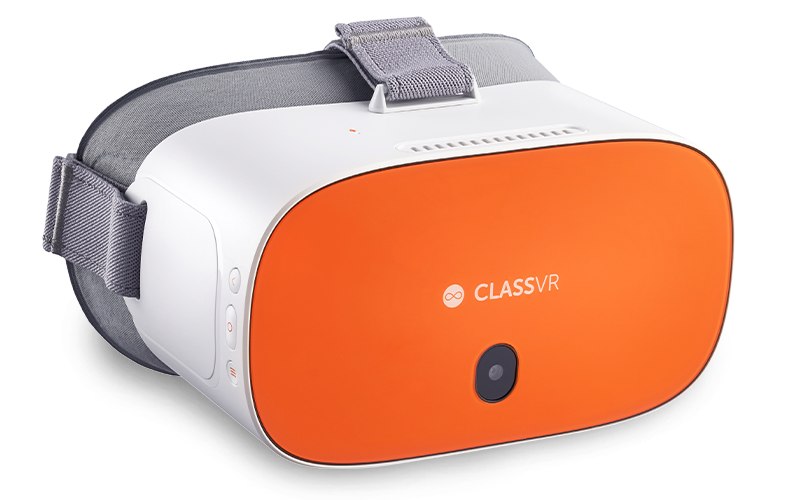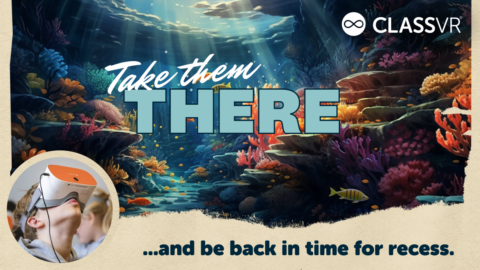Quite often, I’ll get asked a variation of the same question by teachers: what content do you have for young children? What about 11-12 year olds? Do you have content aimed at older students or those in continuing education?
While there are some resources that are clearly more useful for a certain age range, one of the brilliant things about using visual media as a teaching tool is the open-ended nature of images – and 360 content is no exception.
With that in mind, let’s take a look at a single 360 resource available via ClassVR and examine how it could be used across the whole age range.
Anhumas Abyss, Brazil
This incredible freshwater lake is located deep inside a cave, near Bonito. The VR image allows your students to experience the abyss in 360 degrees.

Age 4 to 7 years
Even for very young children, this experience is quite the adventure! Get their imaginations going as they look all around. Try pairing students up so that one of them is wearing a ClassVR headset while they describe the scene to their partner. Such an evocative scene will inspire them to use new vocabulary and really paint a picture with their words. Collect students’ ideas and create a class vocabulary wall for your underwater topic!
Age 8 to 11 years
What a perfect storytelling opportunity. Use this image as a stimulus for creative writing. Where is this mysterious underwater lake? How did the divers get there? What could be lurking in the depths? How could you set the scene for your readers so that they feel they’re really there, down in the dark water? If your students’ next steps include varying sentence length or sentence openers to create suspense in their writing, this experience could be just what you need to bring the idea to life. Try pairing it with some other suspenseful ClassVR resources (Solar Eclipse, Bodleian Library or Future World are good choices).
Age 11 to 14 years
A resource like this is a perfect way to engage students of this age, particularly when it comes to a subject that can be dry: Geography. Take them deep down inside a landform that was created millions of years ago and really spark their interest in the physical processes that shape our world. Find out what they think: how could this underwater lake have come to be? Collect hypotheses and encourage use of geographical terminology. In actual fact, this abyss was formed by erosion; millions of years of rain slowly wore away the limestone and created enormous stalactites. Use other examples of erosion to compare and contrast (some VR experiences include: Cheddar Gorge, Velikaya Delta, Rocks on Kangaroo Island; Slot Canyon Arizona).
Obviously, you could take this beyond the age ranges specified, too; for example, a group of students in further education studying Tourism or Media could consider how this image could be used to promote the local area in Brazil. There are countless possibilities for using this resource with students of all ages – and that’s just a single image!



